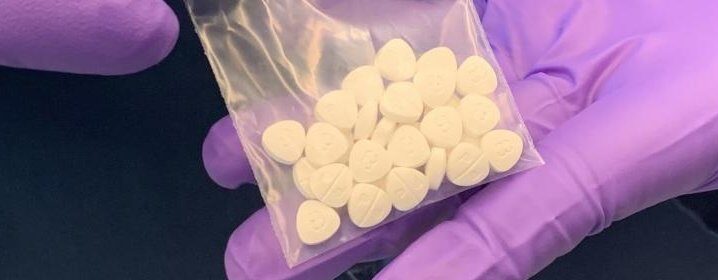IS NITAZENE THE FOURTH WAVE OF THE OPIOID EPIDEMIC?

ABBY GIORDANO – Scientists predict that a new street drug, nitazenes, will be more dangerous than meth, heroin, and fentanyl. Nitazenes were synthesized first by a Swiss chemical company in the 1950s as a pain reliever that targets opioid receptors in the body but were never approved for prescription or over-the-counter use by the US FDA. In general, opioids are a class of addictive pain medications that have been around for centuries. The U.S opioid epidemic is classified into three waves of different popular illicit opioids with the most recent third wave (in 2013), involving the spread of fentanyl. The market for fentanyl continues to grow, especially as it is laced in other street drugs like heroin, xanax, and cocaine unknowingly to the consumer. The addictive quality of opioids stems from the drug’s ability to temporarily trigger the release of endorphins, which work to dim perceptions of pain and boost feelings of pleasure. Patients can build up a tolerance quickly (sometimes with only a few pills), meaning higher tolerance requires the use of a stronger dosage to feel the same reward. The efficiency and proportion of the drug binding to the mu-opioid receptors determine the potency level of different opioids. Even low-potency opioids, such as codeine, hydrocodone, and tramadol are not considered to be good long-term solutions for chronic pain because patients will need to increase the dosage and frequency of re-prescribing.
More technically, nitazenes include a benzimidazole ring, with its most widespread form being the isotonitazene (ISO) form and other variant compounds protonitazene and etonitazene. These were first seen in the US in the Midwest in 2019 and have recently migrated to Southern states and the East coast. This drug is a fully synthetic opioid that is often mixed with other illicit opioids and has a potency that is ten times more than fentanyl (for reference, fentanyl is fifty times more potent than heroin). The drug is cheaper to produce because of its synthetic nature; it does not contain any natural poppy substance, thus it can give the manufacturer a greater profit with the same effect as a pure opioid.
Known predictors of opioid misuse include poverty, young age, history of addiction, regular contact with high-risk people or high-risk environments, high stress, anxiety, depression, and thrill-seeking behavior. The CDC’s State Unintentional Drug Overdose Reporting System (SUDORS) reported the top five states with the highest rate of overdose fatalities (adjusted for population size) from the opioid class in 2020 were West Virginia, D.C, Delaware, Maryland, and Ohio; Georgia experienced 1,254 overdose deaths in 2020. According to the CDC, 2021 marked the highest level of U.S. drug overdose deaths, killing nearly 108,000 people with over 75% of those deaths involving a synthetic opioid. The Tennessee Department of Health published data showing a four hundred percent increase in deadly overdoses linked to nitazenes in the last two years; however, nitazene deaths have not surpassed those from fentanyl (MMWR TN). Nitazenes are particularly deadly when combined with other drugs, therefore the US Drug Enforcement Administration (DEA) is keeping a watchful eye on their recent spread to D.C. and the Northeast.
Like other opioids, with the primary purpose of pain relief, nitazenes come with dangerous side-effects including low blood pressure, pulmonary edema, seizures, and respiratory issues. An analyst from the DEA warns that because these synthetic opioids are being mixed together, the users do not actually know the strength of what they are taking. Those who are not using as strong illicit drugs as fentanyl or heroin, and who are expecting to get a commonly prescribed dose of oxycodone, for example, could be unknowingly at risk of overdosing from nitazenes. Furthermore, the antigen used by paramedics to reverse opioid overdoses, naloxone, or Narcan, has been seen to be less effective when nitazenes are involved. In other words, more doses of Narcan are needed to mitigate overdose effects. The SUDORS data also shows 20% of the 31,594 2020 overdose deaths across the U.S included the administration of naloxone, meaning that over 25,000 people died even after the injection of naloxone (SUDORS). To make rescue efforts more successful, Tennessee is adding nitazene in toxicology screening panels when responding to an overdose emergency and other states are looking into it.
Copy editor – Medhini Ramesh
